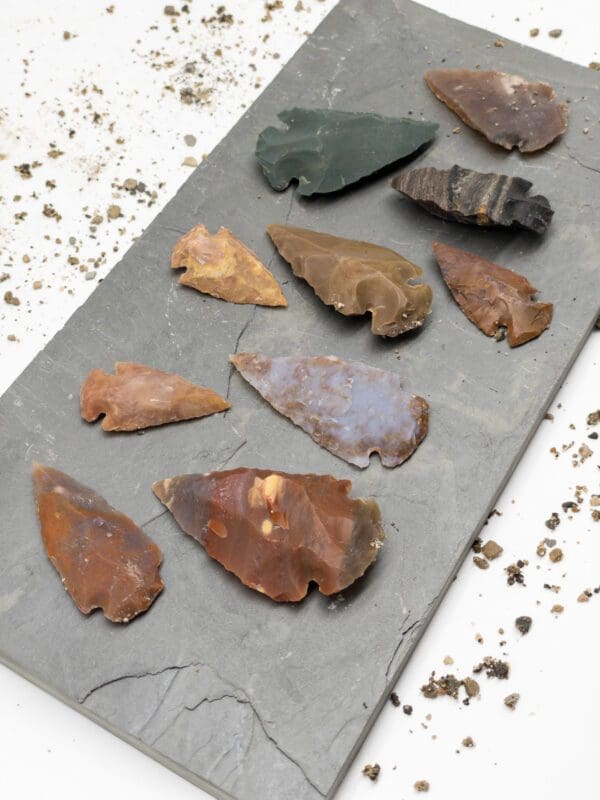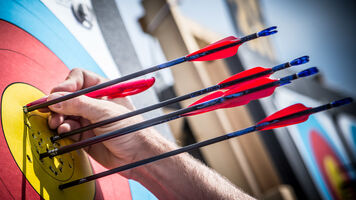
Sharp Insights: Exploring Arrowheads
Arrowheads, the defining components of an archer’s projectile, carry a legacy of diverse designs, materials, and purposes, impacting an arrow’s penetration, accuracy, and functionality in the ancient and modern realms of archery.
Historical Evolution: From Ancient Tools to Modern Precision
Arrowheads hold a rich history, evolving from rudimentary stone tips used in ancient times to modern precision-engineered designs. The transition witnessed advancements in materials, shapes, and crafting techniques, enhancing their efficiency and effectiveness in archery.
Diversity in Designs: Varied Shapes and Purposes
Arrowheads come in diverse shapes and serve various purposes. Broadheads, designed for hunting, feature wide cutting blades for maximum tissue damage. Field points, with their slender profile, are ideal for target practice. Specialty heads like judo points or blunt tips cater to specific hunting or shooting scenarios.
Impact on Arrow Penetration and Damage
The design and weight distribution of arrowheads significantly influence penetration and damage upon impact. Broadheads, with their expansive cutting surfaces, deliver deeper penetration, making them suitable for hunting. Conversely, field points, focusing on piercing, are efficient for target shooting.
Material Matters: Impact of Construction Materials
Arrowheads are constructed using materials like stainless steel, carbon steel, or alloys, each impacting their durability, sharpness, and performance. Stainless steel offers corrosion resistance, while carbon steel ensures robustness and sharpness, amplifying an arrowhead’s effectiveness.
Blade Configuration: Single vs. Multiple Blades
Arrowheads feature single or multiple blades, impacting their cutting capacity and penetration. Single-blade designs, while simpler, offer deeper penetration due to their focused cutting surface. Multi-blade configurations create wider wound channels, enhancing tissue damage.
Precision Engineering: Modern Innovations
Modern arrowhead engineering integrates cutting-edge technology to refine performance. Aerodynamic designs, adjustable blade angles, and materials engineered for maximum sharpness and durability push the boundaries of arrowhead efficiency.
Weight Considerations: Balancing Penetration and Flight
Balancing arrowhead weight influences both penetration and flight characteristics. Heavier arrowheads often penetrate deeper but may affect an arrow’s flight trajectory. Finding the optimal weight ensures an ideal balance between penetration and flight stability.
Tuning Arrowheads for Bow Compatibility
Matching arrowheads to a bow’s draw weight and arrow spine is crucial for optimal performance. Ensuring compatibility minimizes issues like arrow spine mismatch, leading to better accuracy and consistency in shooting.
Customization and Personalization
Arrowheads offer room for customization to suit an archer’s preferences and shooting style. Choices in weight, blade configuration, and materials allow archers to fine-tune arrowheads, reflecting their individuality in their gear.
Quality Investment: Durability and Performance
Investing in high-quality arrowheads ensures durability and reliability in performance. While entry-level arrowheads suffice for beginners, transitioning to superior, specialized arrowheads becomes a choice for dedicated archers seeking enhanced accuracy and efficiency.
Arrowheads remain the keystone in an arrow’s functionality, translating an archer’s skill into precision and impact. For a deeper understanding of Arrowheads and their role in archery, explore the intricacies and significance they hold in the pursuit of accuracy and effectiveness.


